Large scale virtual and immersive display environments, from CAVEs to custom designs, are a big investment, but they can yield a return commensurate with their capabilities. The trick is to fully explore and delineate your use cases in advance, so that the final system design will accommodate everything you want – and build the best possible business case to attract users and funders.
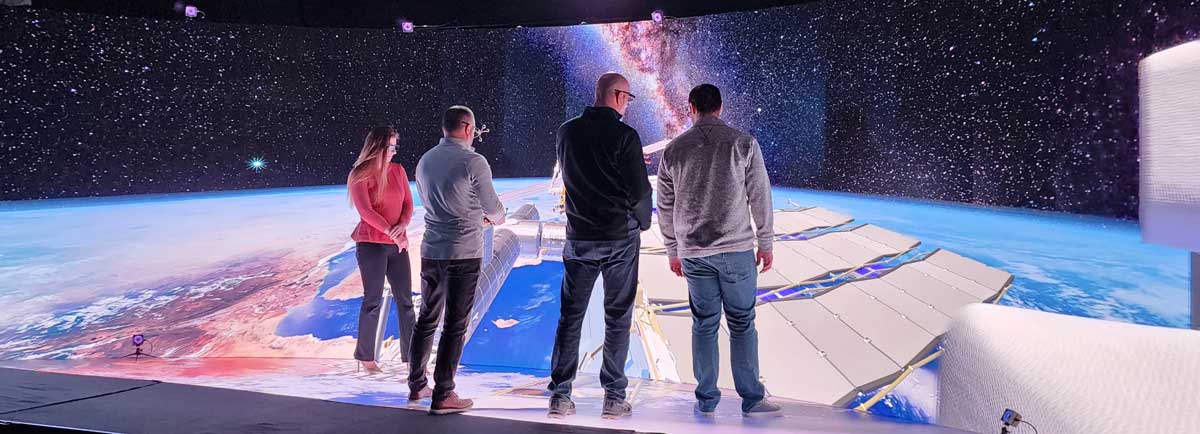
Take a cue from Thomas Jefferson University (TJU), which designed its multifunctional Gutman Library Advanced Media Center to have interdisciplinary utility and university-wide appeal. The idea isn’t unique. Innovation hubs and collaborative research/teaching spaces are typically designed to advance understanding across disciplines – and beyond them. They become showcase locations that not only serve the needs of various departments, but also communicate a university’s mission and purpose in myriad and uniquely powerful ways. They welcome visitors, help to recruit students, retain faculty, sow industrial partnerships, attract collaborators, and bolster the institution’s brand.
TJU’s facility will do all this and more – because its creators did two essential things at the very outset of the project. First, they fully explored the needs of various university stakeholders, from academic departments across the arts and sciences, to students and administrators, to outside interests including research partners and community members. Second, in choosing their technology partner, the TJU team wanted access to a multidisciplinary cadre of designers, engineers, and technology visionaries with broad and deep experience. TJU realized they did not know all the possibilities and wanted to expand their perspective and entertain an even broader range of use cases.
A mission to explore
“Our discovery process is astonishingly in-depth,” says solutions architect Gary Quasebarth. “We’ve designed it that way for two purposes – to ensure we, as the technology partner, have a clear understanding of our client’s use cases and strategic objectives, but also to make certain that our client understands just what’s possible with the technology solution we’re going to provide.” Especially in an era of rapid and accelerating technological progress, it’s essential for the prospective end user to partner with someone who can help them ask the right questions of all stakeholders, weigh their options, and fully grasp the nature and extent of the capabilities they could have at their command.
“The simple fact is, the way to justify an investment is to show there will be a return on the investment, ROI. Maximizing ROI doesn’t just happen after installation; it starts in the discovery phase. This is the time to nail down your goals and use cases – and to collaborate with a technology partner who’ll draw on their insights to maximize the adaptability of the design over time,” adds Quasebarth.
Thomas Jefferson University initially conceived of a relatively simple immersive virtual reality CAVE environment for visualization of traditional datasets. While 3D data visualization is inherently multidisciplinary in nature – with applications extending from biomedical engineering to the social sciences – the discovery process rapidly expanded potential use-cases to two additional areas:
Virtual Production Using Visual Effects (VFX)
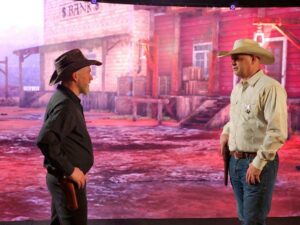
A booming industry sector, surrounded by the buzz of the new, VFX actually uses the same basic technology as data visualization. For TJU, Mechdyne utilized the Unity content creation platform integrated with a motion tracked content acquisition camera to provide a virtual background for media production. To manage the traditional video production aspects of the system, an IP based broadcast switch was provided to allow camera control, windowing, source management, layering, recording and live broadcasting to Twitch, YouTube and other streaming services.
Realizing the potential for virtual production led to changing the display design from standard, linear screens to an immersive curve to create a seamless backdrop. In addition to a floor display, an LED ceiling system was added to create a larger display volume. The LED ceiling can also be used for “set lighting” in certain production applications.
The potential benefits of virtual productions appeal to multiple stakeholders. It enables a more compelling and experiential backdrop for events and presentations, raising the university’s profile and burnishing its brand. For schools that have media programs, it becomes a powerful recruitment tool for students and faculty alike. VFX also opens promising avenues for outside partnerships and can become a revenue generator in its own right.
Esports Capabilities
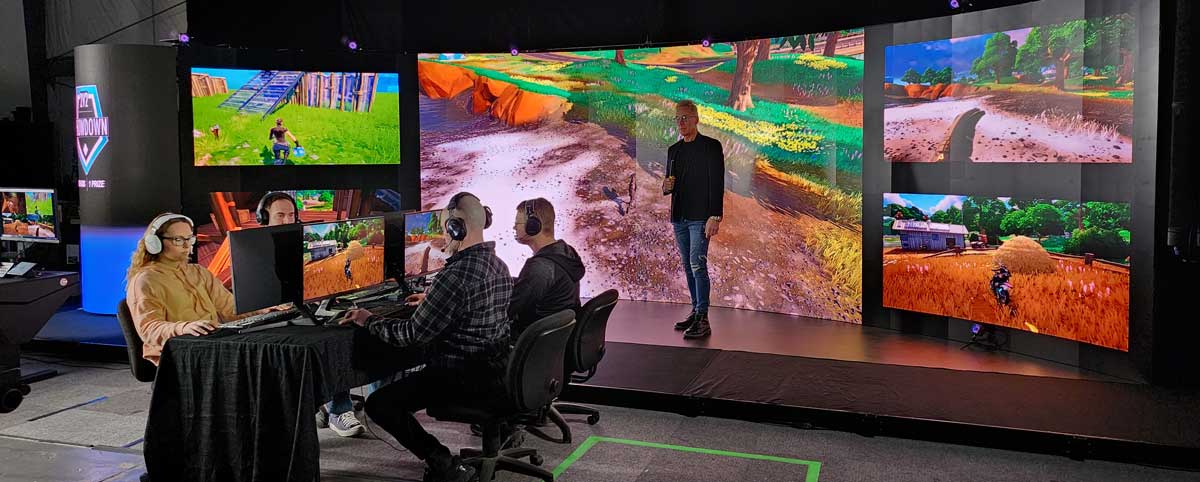
Leveraging the switching and broadcast capabilities used for virtual production, inputs were provided to allow gaming or presentation computers to be displayed, recorded, and/or broadcast as required. Adding e-sports capabilities did not entail an enormous financial investment or result in system design tradeoffs that impeded other use cases, yet it vastly expanded the utility and appeal of the system while opening potentially significant revenue streams for Thomas Jefferson University.
Gaming is often depicted as a solitary activity – a sedentary activity if there was one – yet the rise of esports challenges those stereotypes. To compete in esports, a subcategory of the gaming industry where teams participate in organized, primarily online, video gaming competitions, students engage with fellow teammates and coaches in much the same way as traditional athletes. They practice, strategize, learn, and adapt. Moreover, they become immersed in a booming industry where demand is high for standout performers, game developers, bloggers, commentators, marketers, and investors.
Bolstering the case for adding esports capabilities to your design: These high-profile activities can run outside of business hours, maximizing system use without detracting from longevity. With current LED displays boasting upwards of a 100,000-hour lifespan, extended usage can easily be accommodated without significant budgetary ramifications.
Seeing the future
It’s important to remember that a large-scale, immersive visualization system such as the one Mechdyne created for Thomas Jefferson University can last 10 years or more. The more adaptable the design, the more and varied uses it can accommodate. Designed correctly at the start, the system can be easier to modify or expand over time.
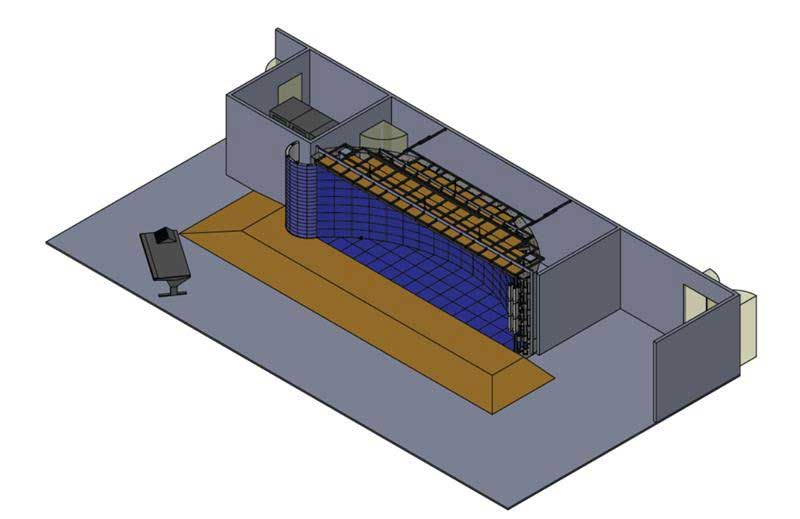
What’s meant by “adaptable?” At the most basic level, this means being able to alter the dimensions of the environment – from widening and deepening the field of engagement to adding floor and ceiling elements as needed. The display configuration is just part of the challenge because you need the content and graphics processing power to take advantage of the environments you’re tailoring. This is the reason so many CAVE and video wall environments – even newly built ones – are static in design. Not many solutions providers marshal the full array of engineering, programming, and content creation skills that Mechdyne brings to these environments.
Where the technical meets the strategic
In creating the TJU facility, Mechdyne worked closely with university teams to design operational and control systems that are easy to use and robustly durable. Those criteria influenced everything from our choice of LED display technology and LED controllers to IP video-based source management and broadcast capabilities, system control, visualization software, digital signage software (CMS), VR and camera tracking, and control desk design.
Proper discovery and planning, however, extend just as deeply into the strategic realm, beginning with where the system is installed. TJU’s facility boasts a central location on the lower level of the Gutman library to make the technology available to all. And to maximize interest and curiosity, the system was carefully designed and positioned in the space to offer a “sense of arrival” for students and faculty entering the environment. Here visitors are greeted by a gracefully radiused, concave immersive screen, punctuated by an engaging digital signage display positioned to promote the various activities and uses that are available.
“Digital signage is a use case in itself,” says Quasebarth. “If the display has longevity and is not being used for teaching and events, consider the myriad of other ways it can be used to promote use and the school.”
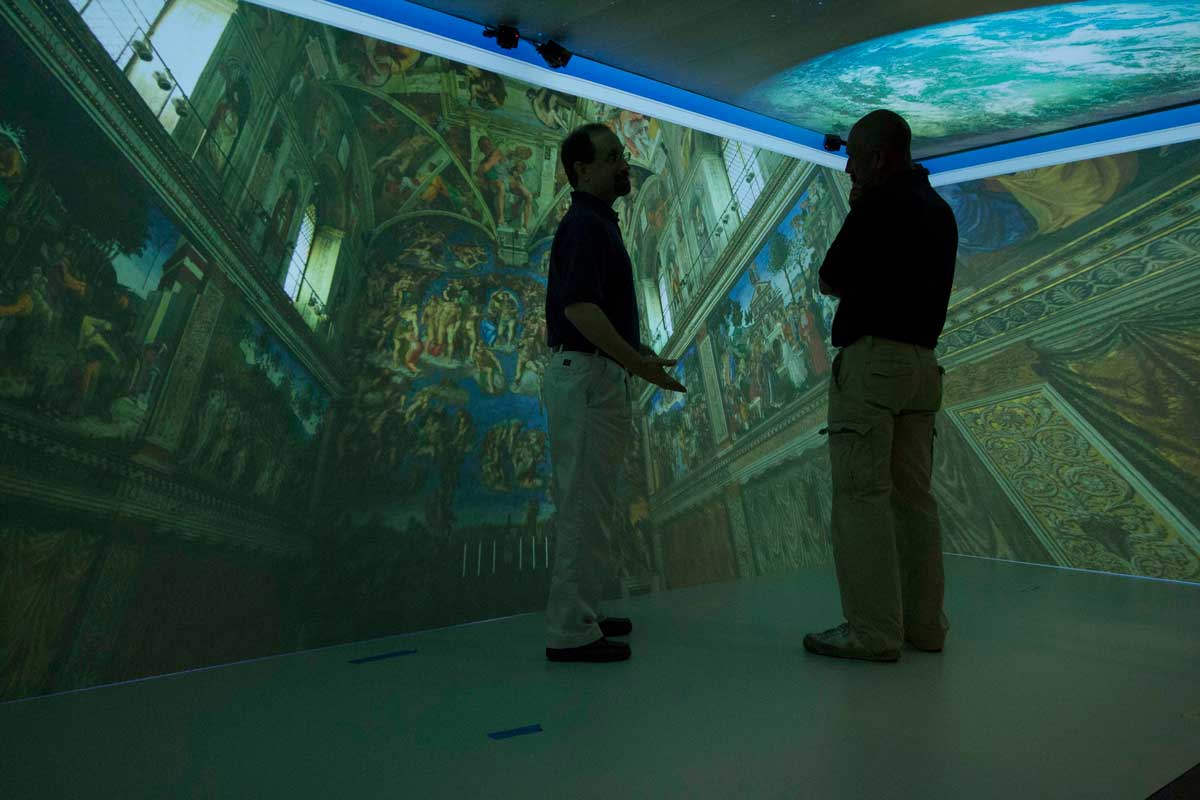
This is not the first such solution developed for interdisciplinary work. Villanova University’s Immersive Studies CAVE, housed in the school’s Falvey Library, is an object lesson not just in leading-edge technical design, but in strategic consensus building to enable marquee projects of this nature. It’s well worth your time to watch the video made by its creator, Frank Klassner, in which the computing sciences professor and director of the university’s Center of Excellence in Enterprise Technology provides a detailed roadmap for “Making Your Visualization Center an Academic Switzerland” – in other words, how to win broad-based support from all stakeholders without alienating entrenched interests. Topics range from how to determine physical and conceptual placement to strategies for interdisciplinary outreach and how to recognize and break down silos.
Better planning, richer ROI
Immersive environments such as TJU’s Gutman Library Advanced Media Center and Villanova’s Immersive Studies CAVE came to be through careful planning, grounded in an understanding that systems like these aren’t just research tools. They can help with attraction and retention of students and faculty. They attract industrial partnerships. They raise an institution’s profile on multiple fronts. The key is to spell out these goals in advance of design, and to partner with a solutions provider who can further your thinking and fully realize your vision.

